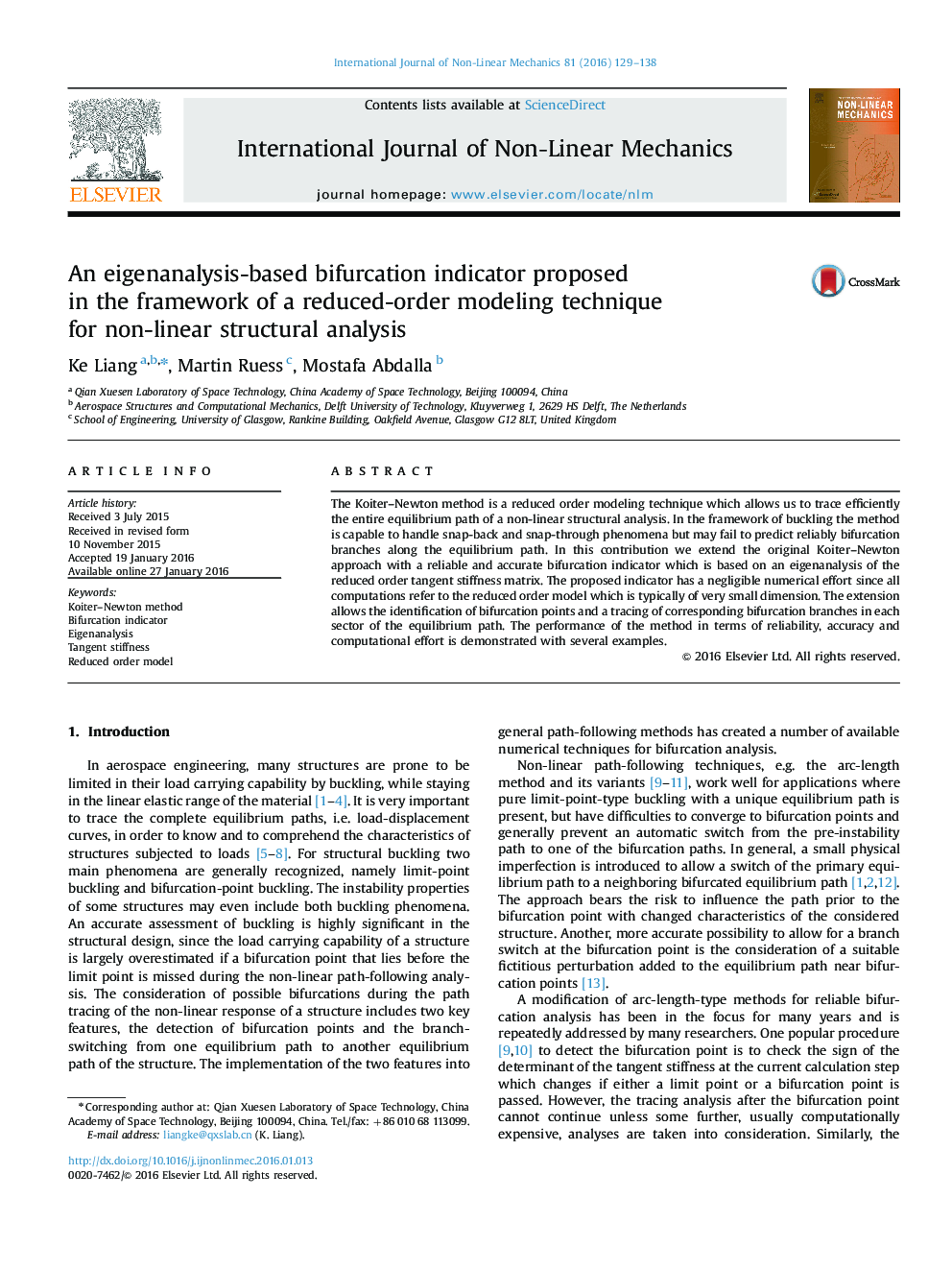| Article ID | Journal | Published Year | Pages | File Type |
|---|---|---|---|---|
| 783365 | International Journal of Non-Linear Mechanics | 2016 | 10 Pages |
•We aim at detecting and tracing bifurcation branches when the structure bifurcates before reaching a limit point.•We propose a bifurcation indicator in the framework of the Koiter–Newton method.•We use eigenvalues and eigenvectors of the tangent stiffness matrix of the reduced order model for the bifurcation analysis.•We reduce the computational cost due to the use of the lower-order tangent stiffness.
The Koiter–Newton method is a reduced order modeling technique which allows us to trace efficiently the entire equilibrium path of a non-linear structural analysis. In the framework of buckling the method is capable to handle snap-back and snap-through phenomena but may fail to predict reliably bifurcation branches along the equilibrium path. In this contribution we extend the original Koiter–Newton approach with a reliable and accurate bifurcation indicator which is based on an eigenanalysis of the reduced order tangent stiffness matrix. The proposed indicator has a negligible numerical effort since all computations refer to the reduced order model which is typically of very small dimension. The extension allows the identification of bifurcation points and a tracing of corresponding bifurcation branches in each sector of the equilibrium path. The performance of the method in terms of reliability, accuracy and computational effort is demonstrated with several examples.
